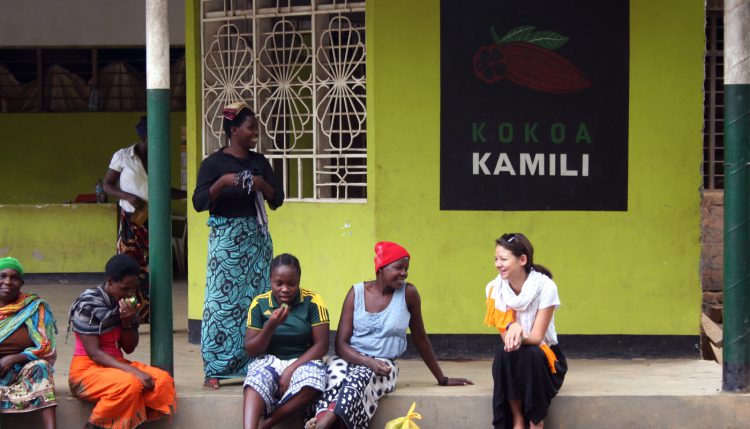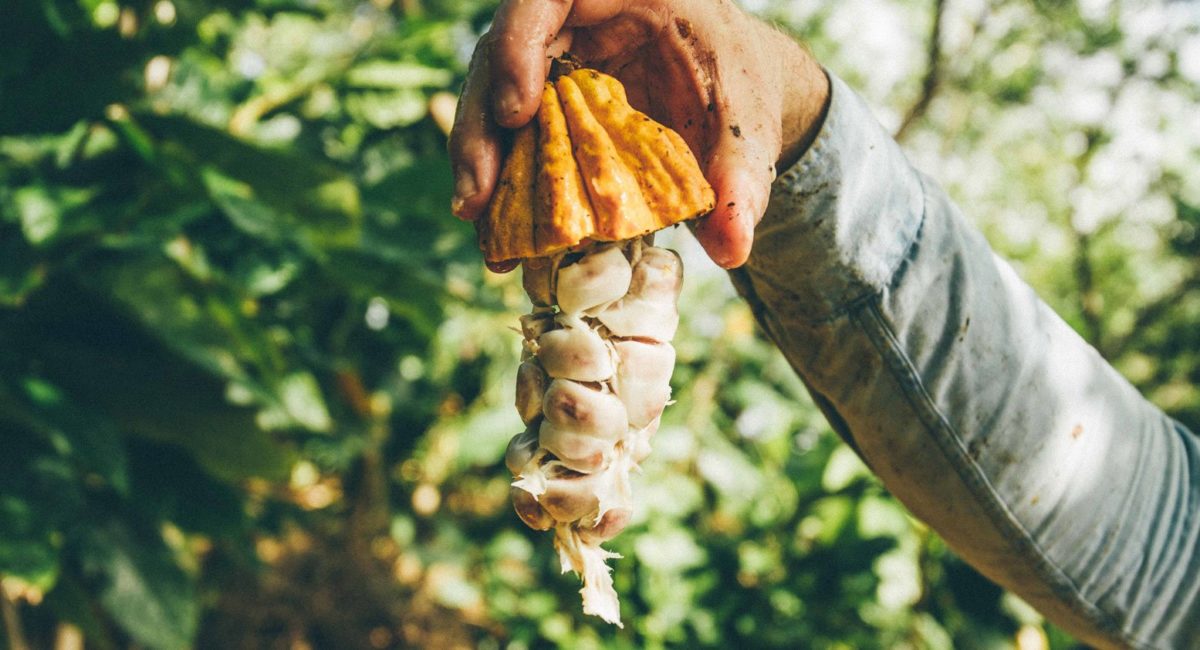In the Theyo interview, Ulrika talks about the series of coincidences that made her a chocolate manufacturer, why mistakes are so important and how consumers can recognize sustainable chocolate.
In Germany, the first association with Sweden is mostly IKEA or WASA. But you make chocolate. How did you get into it?
Ulrika: Fredrik and I lived in Stockholm. We had a normal, hectic life. It somehow felt wrong and we realized that something had to change. On a holiday in southern Sweden we came across a candy factory that was up for sale. At that point we knew nothing about chocolate! It really was a totally crazy idea and felt a bit like a summer dream.
At the same time, we tried a bean-to-bar chocolate for the first time... and were blown away! How can a chocolate be so full of taste and different aromas? We have started to take a closer look at the chocolate industry. We found out that the so-called "chocolate factories" in Sweden don't actually produce chocolate at all, but buy ready-made cocoa mass and only process it further. We somehow felt cheated and thought "there has to be another way".
This all happened within two months of stumbling across the factory. We said: "what the heck, let's do it!" So we bought the candy factory, quit our jobs and moved, 600 km away from Stockholm, in the middle of the country. Today we run the factory - Svenska Kakaobolaget - which is in an old brick building from the 19th century. At that time, the school of a 200-person village was located there.
This life was a huge change for us. But a change that we have never regretted.
 Swedish bean-to-bar makers Ulrika and Frederik ©Svenska Kakaobolaget
Swedish bean-to-bar makers Ulrika and Frederik ©Svenska Kakaobolaget
You have a wide range of different types. How do you create new flavors?
In the pure chocolate bars, we create a variety of flavors with different beans. We try all the beans we can get hold of. The taste should of course be good, but also have that certain something and somehow surprise. We look at who grows the cocoa, where and how it grows, what the conditions are like, what the cocoa farmers earn and so on.We also try to learn as much as possible about beans, cacao farmers and producers. And we travel to the farms and know the producers personally.
With our flavored bars we are true to our Swedish roots. For example, there is this typical sweet that all Swedish children love: liquorice. It went without saying for us that we would also make chocolate with liquorice. Our next flavor will likely be a Swedish berry, but we haven't quite made up our minds yet.
The most brilliant ideas always come from mistakes. Mistakes are, so to speak, the root of learning. And we learn something new every day.
At Svenska Kakaobolaget, how do you deal with the mistakes you make? Do you have any advice for aspiring chocolate makers?
We love mistakes! We make mistakes all the time. This is how we learn, develop and come up with new ideas. The most brilliant ideas always come from mistakes. Mistakes are, so to speak, the root of learning. And we learn something new every day.So far you have made bean-to-bar chocolate, but also mainstream chocolates. Now you are completely switching to bean-to-bar production. Why is this so important to you?
In fact, we're even switching to bean-to-praline. We had this vision from the beginning. So far we've been two-pronged: a candy-only brand and a bean-to-bar-only brand. We didn't want to confuse customers, which is why we made a clear distinction between what is bean-to-bar and what isn't in marketing.Now we are really looking forward to this new phase in our business. In fact, we're the first in the Nordics to exclusively produce bean-to-bar. And that's not all: our sweets are made from as few high-quality ingredients as possible. This transparency is very important to us.
How do you decide which farms to work with? How do you ensure that the quality of the goods and the working conditions on site meet your requirements?
It always starts with the taste. When we taste a bean that has an exciting aroma, the next step is to look for more information. Before we start working with a new producer, we want to know everything: what is happening on site? What values does the producer have? And what are their attitudes towards quality, transparency and sustainability? What relationship does he have with the cocoa farmers? Our goal is to personally visit all the producers we work with. This allows us to build long-term relationships, develop together with them and learn from each other. We are convinced that this is the only way to make permanent changes.The expensive certifications often ignore quality and taste and pass the costs on to the farmer instead of to the consumer
You attach great importance to sustainable and socially responsible action. Why are there hardly any corresponding official certifications and seals on your products?
We have made the decision not to have our chocolate certified by any third party. This decision was the result of our experience with cocoa producers around the world. The expensive certifications often ignore quality and taste and pass the costs on to the farmer instead of to the consumer. We, on the other hand, firmly believe in transparency and responsibility as key factors for a sustainable and fair world.What advice do you have for customers who are looking for good, sustainable products?
As a consumer, it is difficult to make ethical choices. Certifications sound like a simple guide at first, but are often more appearances than reality. We can only speak for the chocolate industry but: firstly, look at the ingredients list. Few ingredients are usually a good sign. Secondly, look at the producer and how much transparency there is in the process and sourcing of the cocoa.If there are any keywords to look out for, it would be chocolate labeled "bean-to-bar" or "craft chocolate." Although, of course, these trending terms are no guarantee of high-quality chocolate.
Which cocoa bolaget chocolate do you recommend for which season?
Cardamom 71% for the Christmas seasonHonduras 70% in winter
Peru 72% for spring
And Dark Milk on the ski slope!
Chocolate can actually be eaten in any situation. What's your favorite "chocolate situation"?
I love starting the day with 100% chocolate instead of coffee! She gives me an energy boost. But of course, as chocolate manufacturers, we know no limits when it comes to eating chocolate. For us, chocolate can be our breakfast. For example, if you are in the jungle on a business trip and have no other breakfast with you, or if you are crossing the Peruvian Andes on an overnight bus. But we snack on chocolate at almost any time of the day. It's kind of a work-related addiction I would say. As creative as the chocolate itself: the design by Svenska Kakaobolaget
As creative as the chocolate itself: the design by Svenska KakaobolagetDo you have a favorite chocolate recipe?
Personally, we love using chocolate in savory dishes, such as Mole. This is a traditional sauce from Mexico.If you want to do a classic chocolate dessert, my favorite is a very simple water-based mousse. Melted chocolate is whipped with water over ice. You can taste the origin of chocolate in a pleasant way!



